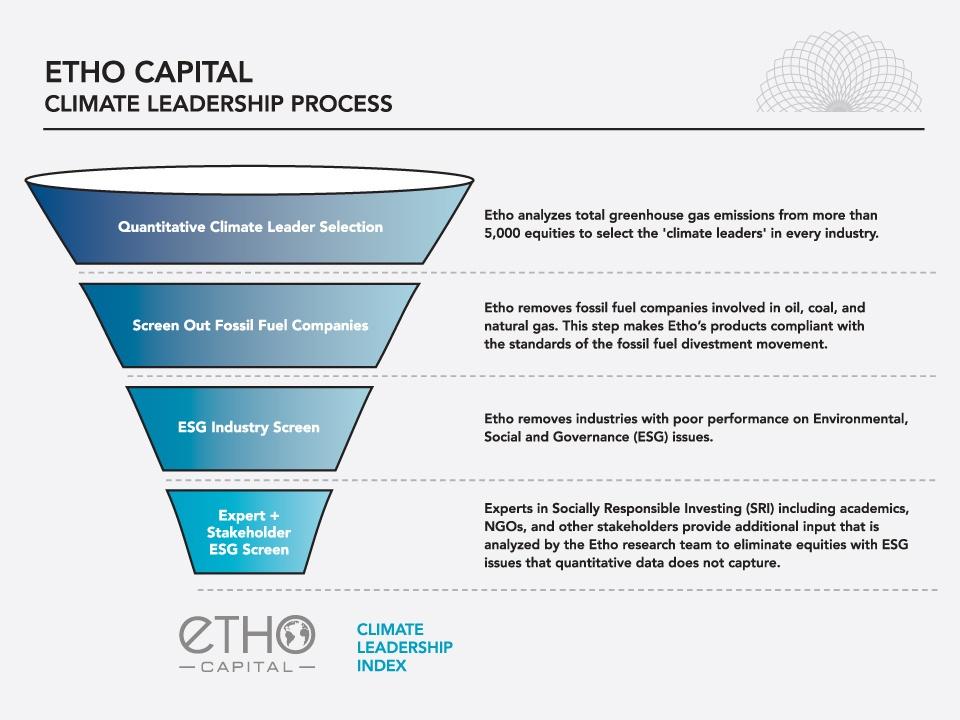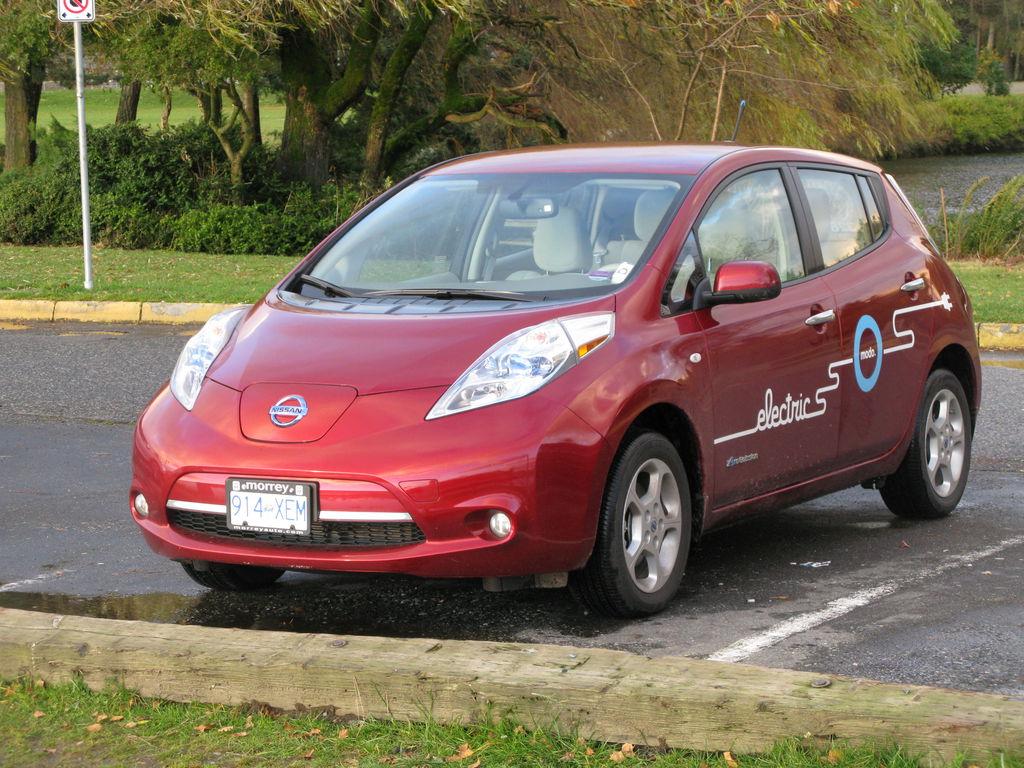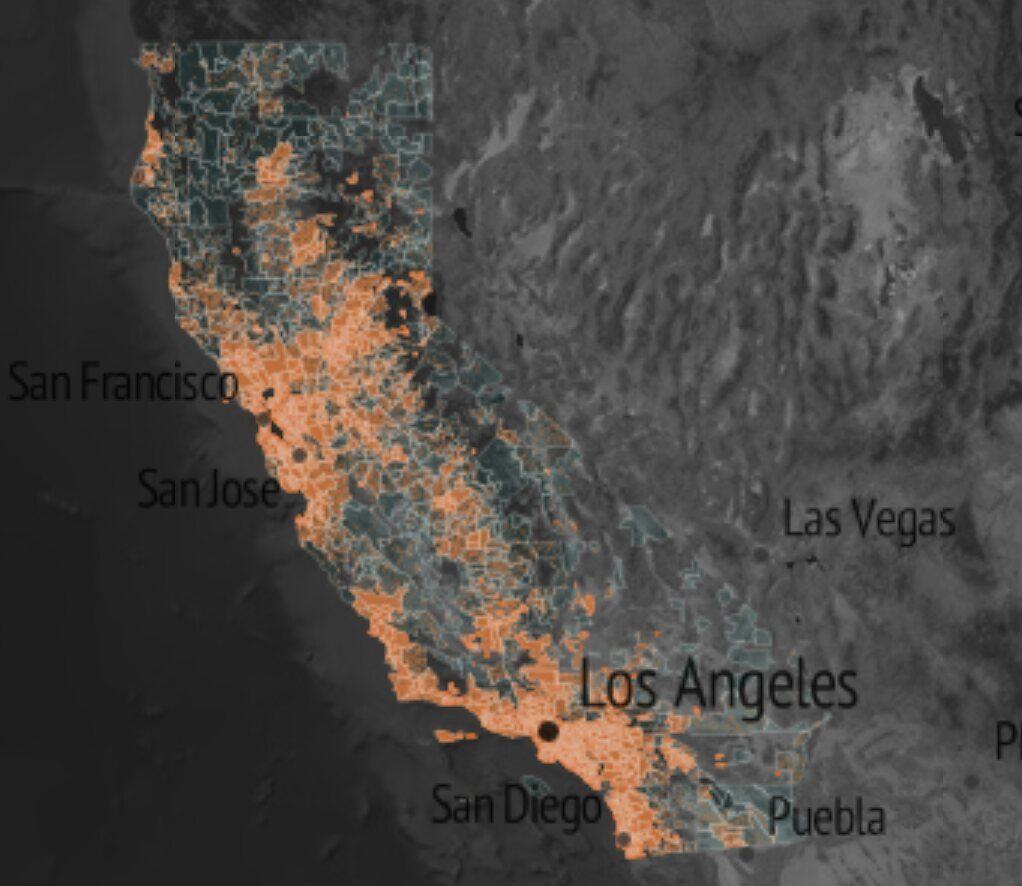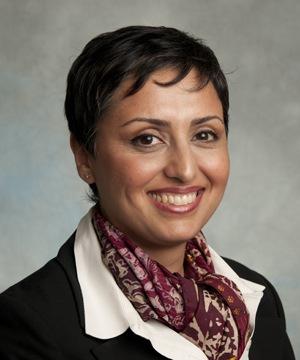The array of sustainable investing choices is taking another step toward the mainstream as a San Francisco investment firm today launched on the New York Stock Exchange what it touted as the world’s first diversified, socially responsible and fossil-free, exchange-traded fund (ETF) based on a climate leadership index.
That may seem like a mouthful. But it’s worth noting how such products are standing up taller to pass any giggle test. At the same time, the increasing number of these and other investor tools should tell corporations, their directors and shareholders around the world that sustainable investing is growing and being taken more seriously faster than perhaps anybody envisioned even a year ago.
Among the newest tools is an ETF from Etho Capital in partnership with Factor Advisors, a subsidiary of ETF Managers Group. The Etho ETF is comprised of U.S. public equities in the climate leadership index which, company CEO and co-founder Conor Platt said, “combines quantitative climate performance data with qualitative environmental, social and governance criteria and feedback from non-governmental and academic sustainability experts.”
Platt said the index “has been closely studied to understand how it would have performed historically compared to major relevant indices.” In 10-year back tests, he said the index outperformed the S&P 500 on a risk-adjusted basis while reducing greenhouse gas emissions per dollar invested by at least 50 percent.
Etho Capital first screens out all fossil fuel companies, along with those in the tobacco, weapons and gambling industries. (See funnel graphic above.)
Ian Monroe, the other co-founder and the Fund’s sustainability scientist who lectures at Stanford University, listed 10 of the companies in the Fund. It shouldn’t surprise anyone that companies such ash Apple, First Solar, Google, Intel, Nordstom and Tesla are among them. It might surprise some that Chipotle, Disney, Harley Davidson and T-Mobile are also in the Fund.
One of the companies bounced from the Index is Monsanto. Monroe said it was removed for a “variety of reasons, including the carcinogenic effects of their herbicide, their treatment of smallholder farmers in disputes and their aggressive lobbying against GMO (genetically modified organisms) labeling law and regulatory oversight of GMO products.”
The Divest-Invest coalition announced in September that the global divestment movement now includes commitments from 430 institutions and more than 2,000 wealthy individuals; collectively they represent $2.6 trillion in assets under management.
The Divest-Invest tally is based on a report from Arabella Advisors and reportedly represents a 50-fold increase in just one year. If that assertion holds up, the fossil-free investment movement could be considered the fastest investor movement / shift ever.
The tally is likely to grow as a Morgan Stanley survey of millennials indicated they are taking environment, social and governance (ESG) investing more seriously every day.
“Investors of all ages are increasingly concerned about climate change,” Monroe said. “Younger investors are especially focused on aligning their portfolios with long-term sustainability because they have the most to lose form the ripple effects of a rapidly warming world.”
Now whether that generation actually acts on their beliefs is going to take some, maybe a lot of time. They be faced with a choice: Morgan Stanley projects that $41 trillion will pass to millennials from baby boomers during the next 35 years.
Conor and Monroe first connected about what became the Etho ETF when Monroe was experimenting with how to track the climate footprint of personal investment portfolios a few years back. Monroe founded Oroeco.com to help track the climate impact of various lifestyles.
“We quickly realized that we could take the data that Oroeco was using to track the carbon footprints of equity investments and use it to build investment products that are optimized for both climate and financial performance.
“And as we looked more closely into investing in climate efficiency,” Monroe continued, “we realized that climate-efficient investments can generate better returns and lower risks alongside superior sustainability. It’s a realization that neither Conor nor I would’ve come to on our own.”
Asked if the upcoming climate talks in Paris will play much of a role to speed up the divest/invest movement, Monroe is keeping his expectations in check.
“I’m hopeful that a strong international climate agreement will come out of Paris,” he said. “But even the vest possible deal will only get us about halfway to solve climate change. We’re still going to need to see a shift in climate culture for both individuals and investors where consumer and investor dollars are consistently directed to the cleanest options.”
Image credit: Etho Capital




















